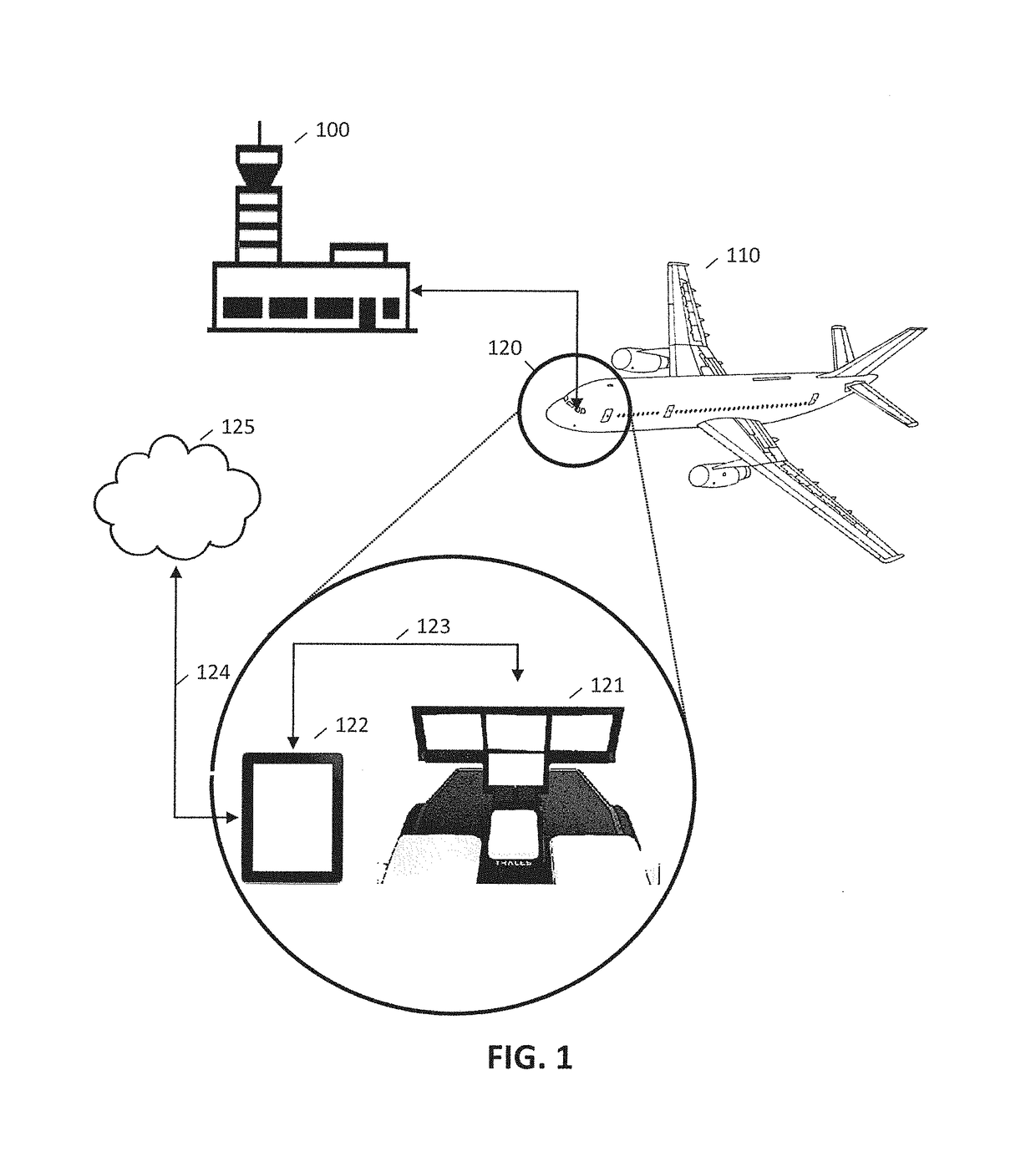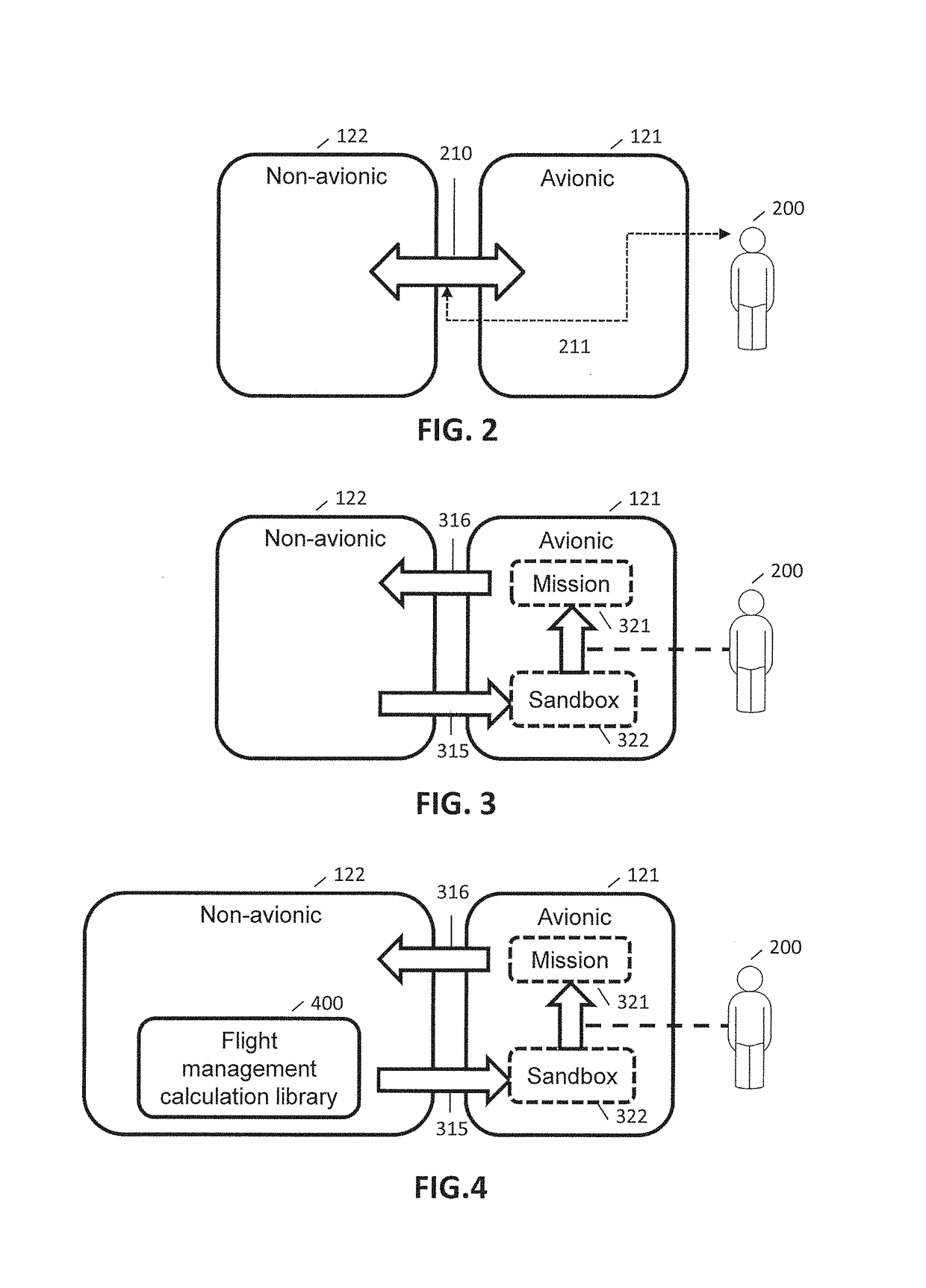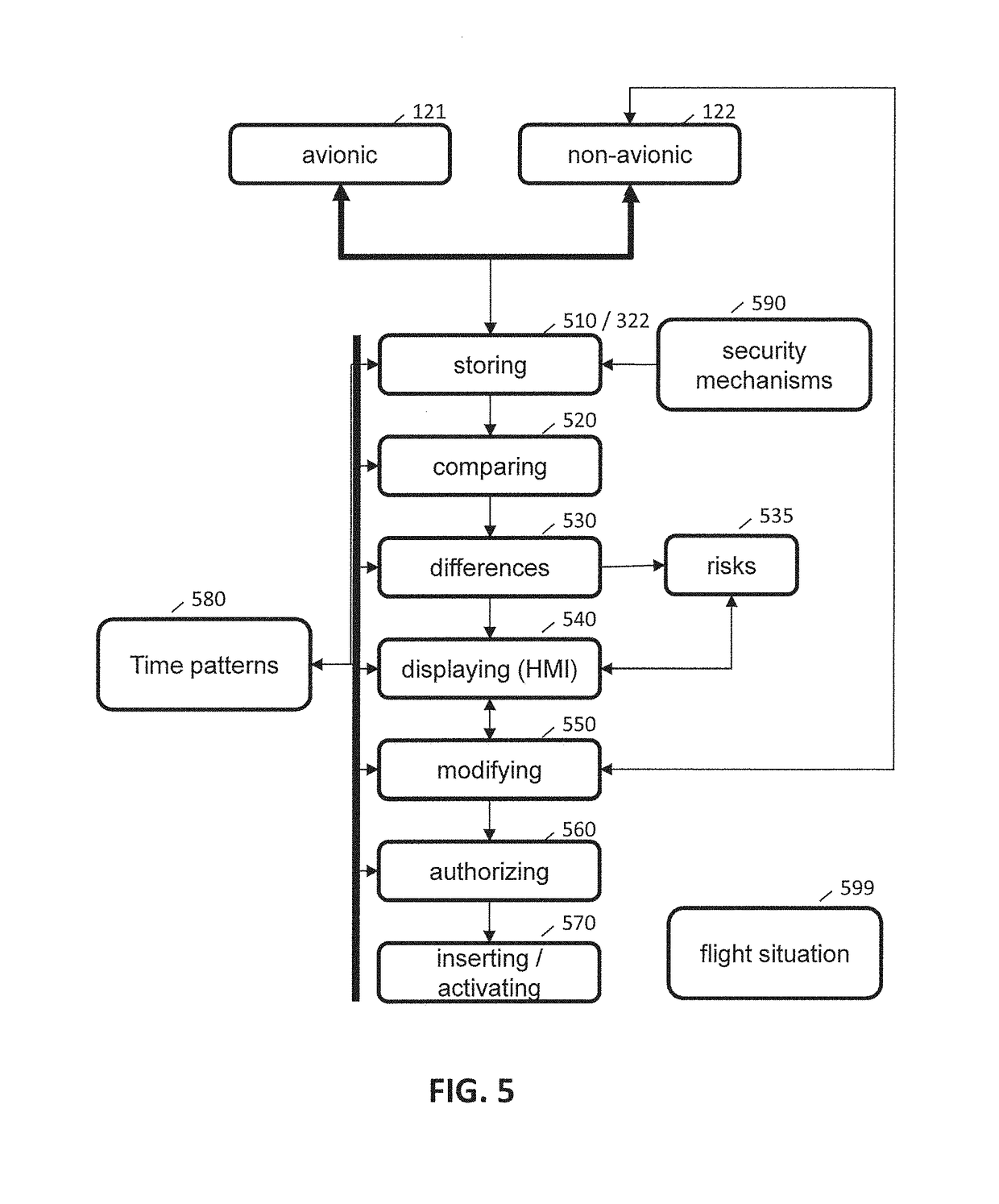Synchronization of a dual avionic and non-avionic system
a technology of synchronization and non-avionic systems, applied in the field of onboard systems, can solve problems such as specific technical problems, present critical security and/or safety problems, and technical problems relating to communication and updating of this system with resp
- Summary
- Abstract
- Description
- Claims
- Application Information
AI Technical Summary
Benefits of technology
Problems solved by technology
Method used
Image
Examples
Embodiment Construction
[0043]An aircraft in the sense of the invention is a transport means capable of moving in the earth's atmosphere. For example, an aircraft may be an aeroplane or a helicopter (or even a drone). By extension, the embodiments of the invention are applicable to any type of ground, sea, air or space (optimization for orbital trajectories) transport.
[0044]The invention describes various interactions between one or more avionic systems and one or more non-avionic systems. The two types of systems are technical systems. Avionic systems are systems that meet particular, in particular technical, needs, such as those stipulated by the aeronautical regulations.
[0045]An “avionic system” (or “system of avionic type”) is a system having specific technical features in comparison with a “non-avionic” system (or “system of non-avionic type” or “open world type”), these technical features being certified administratively by a trusted authority (in this case the aeronautical regulator). Technically, d...
PUM
 Login to View More
Login to View More Abstract
Description
Claims
Application Information
 Login to View More
Login to View More - R&D
- Intellectual Property
- Life Sciences
- Materials
- Tech Scout
- Unparalleled Data Quality
- Higher Quality Content
- 60% Fewer Hallucinations
Browse by: Latest US Patents, China's latest patents, Technical Efficacy Thesaurus, Application Domain, Technology Topic, Popular Technical Reports.
© 2025 PatSnap. All rights reserved.Legal|Privacy policy|Modern Slavery Act Transparency Statement|Sitemap|About US| Contact US: help@patsnap.com



